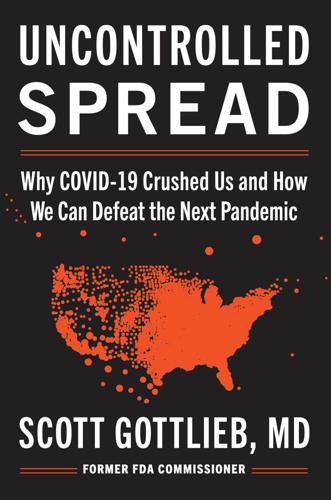
Uncontrolled Spread: Why COVID-19 Crushed Us and How We Can Defeat the Next Pandemic
by
Scott Gottlieb
Published 20 Sep 2021
The coronavirus RNA may have jumped from one of the patient samples that the CDC was processing and into the manufacturing process for the kits it was assembling in the same facility. Making matters worse, the CDC later acknowledged that it hadn’t put in place proper controls and standard operating procedures to fully prevent inadvertent contamination. In a February 19 email, a scientist at CDC’s core lab, Dr. Nicky Sulaiman, told Lindstrom that another lab employee “had agreed to also decontaminate all . . . areas and instruments to be used in further manufacturing of the reagents,” after the problems first arose.22 The email suggested that the CDC knew that the lab might be contaminated.23 When the CDC made the first batches of test kits, the respiratory lab was probably still clean.
…
The CDC retained this first batch of kits for its own use, to process patient samples that were being sent to the agency by doctors. But then, when the CDC assembled later batches of kits, to be shipped to the public health labs, a contamination occurred. When the agency realized the setback, and went to make new batches of kits, the contamination persisted. This scenario probably explains why the CDC was able to continue to test patient samples in its own lab without any problems, but outside labs weren’t able to get the CDC test kits to work for them. By keeping that first run of test kits, the CDC had unknowingly retained for itself the only tests that were free from contamination. The inability to firmly establish where the contamination occurred underscored the loose controls in place.
…
Many observers assumed that the White House had prevented the CDC from recommending large-scale testing given the president’s public statements about more testing producing more cases, which in turn produced more public fear and scrutiny.7 But this aversion to testing was also organic inside the CDC. The agency clung too long to the approach it knew for flu. This caused the CDC to make other mistakes with its data. Two of the biggest failures was the CDC’s overestimation of the risk of spread from contaminated surfaces, and its underestimation of the risk from asymptomatic transmission. The two errors were mutually dependent. For a long time, without adequate testing and with no emphasis on diagnosing asymptomatic cases, the CDC was attributing a lot of the transmission it was seeing, and that it couldn’t explain, not to asymptomatic infections but to “fomites”—a circumstance where someone touches a surface that had become contaminated with the respiratory secretions of an infected patient and then touches his or her own nose, eyes, or mouth.

The Contrarian: Peter Thiel and Silicon Valley's Pursuit of Power
by
Max Chafkin
Published 14 Sep 2021
a record price: “Peter Thiel Buys Maui Home for a Record $27 Million,” The Wall Street Journal, July 15, 2011, https://www.wsj.com/articles/SB10001424052702304911104576444362936635124. and ultimately flawed: Riley Beggin, “Report: The CDC Contaminated Its First Coronavirus Tests, Setting US Back,” Vox, April, 18, 2020, https://www.vox.com/2020/4/18/21226372/coronavirus-tests-cdc-contaminated-delay-testing. “Software is eating the world”: Marc Andreessen, “Why Software Is Eating the World,” Andreessen Horowitz, August 20, 2011, https://a16z.com/2011/08/20/why-software-is-eating-the-world/. two more contracts, worth $25 million: Dave Nyczepir, “HHS Cites Coronavirus ‘Urgency’ in Speedy Palantir Contract Awards,” FedScoop, May 8, 2020, https://www.fedscoop.com/hha-covid-funds-palantir/.

Forward: Notes on the Future of Our Democracy
by
Andrew Yang
Published 15 Nov 2021
CHAPTER 10: THE CENTERS FOR PASSING THE BUCK But the coronavirus tests David Willman, “Contamination at CDC Lab Delayed Rollout of Coronavirus Tests,” Washington Post, April 18, 2020. “It was just tragic” Sheila Kaplan, “C.D.C. Labs Were Contaminated, Delaying Coronavirus Testing, Officials Say,” New York Times, April 18, 2020. out of the nearly fifteen thousand “What Is the CDC and What Does It Do?,” Atlanta Journal-Constitution. He couldn’t identify Kaplan, “C.D.C. Labs Were Contaminated.” Weeks later, the director Abby Goodnough and Sheila Kaplan, “C.D.C.’s Dr. Robert Redfield Confronts Coronavirus, and Anger,” New York Times, March 13, 2020.
…
The false positives pointed to contamination at the point of manufacture—at CDC headquarters in Atlanta. The reports were so indicative of a screwup that Timothy Stenzel, a virologist from the Food and Drug Administration, was sent to the CDC to see why the tests were all giving false positives. He found that the CDC, in violation of its own protocols, had assembled the test kits in a room that also contained coronavirus material leading to contamination. Technicians were strolling in and out of the testing lab without even changing their lab coats. In other words, the CDC had assembled the testing kits in a lab that also housed the coronavirus. Resolving the test-manufacturing defects took one month—a lost month during one of the most crucial periods in American history.

The Plague Year: America in the Time of Covid
by
Lawrence Wright
Published 7 Jun 2021
The CDC’s Biotechnology Core Facility Branch is in charge of producing the components used to detect such pathogens as flu, HIV, and SARS. To save time, Lindstrom asked the branch to produce both the components and a template of a coronavirus fragment, which would be used to generate the positive control for the CDC test. Doing these procedures together risked the possibility of contamination, which is why they are normally done in separate facilities. Just as the test kits were being boxed up and mailed, a last-minute quality-control check found a problem that could cause the test to fail a third of the time. A decision was made—perhaps by Lindstrom, perhaps by his superiors—to send the test anyway.
…
fewer than 500: Julie Steenhuysen, Andrew Hay, and Brad Brooks, “Mixed messages, test delays hamper U.S. coronavirus response,” Reuters, Feb. 27, 2020. 1.6 million per week: “Scoop: Lab for coronavirus test kits may have been contaminated,” Axios, March 1, 2020. “filthy”: Interview with FDA officials. Sheila Kaplan, “C.D.C. Labs Were Contaminated, Delaying Coronavirus Testing, Officials Say,” New York Times, May 7, 2020. “When Dr. Stenzel”: FDA: “Regulatory history of CDC’s molecular diagnostic test for SARS-CoV-2,” draft, Dec. 1, 2020. Biogen: Sarah Kaplan and Chris Mooney, “Genetic data show how a single superspreading event sent coronavirus across Massachusetts and the nation,” Washington Post, Aug. 25, 2020; Emma Brown, “A look inside coronavirus preparations at a major U.S. hospital,” Washington Post, March 9, 2020; “Second Presumptive Positive Case Identified by Massachusetts State Laboratory,” Massachusetts Department of Health, March 5, 2020.

The Survival of the City: Human Flourishing in an Age of Isolation
by
Edward Glaeser
and
David Cutler
Published 14 Sep 2021
The New York Times, April 15, 2008. www.nytimes.com/2008/04/15/science/15chol.html. “William Bradford on the Great Sickness among New England Indians (1633).” Westshore Community College. www.westshore.edu/personal/mwnagle/US1/NativeAmerDocs/Bradford-sickness.htm. Willman, David. “Contamination at CDC Lab Delayed Rollout of Coronavirus Tests.” The Washington Post, April 18, 2020. www.washingtonpost.com/investigations/contamination-at-cdc-lab-delayed-rollout-of-coronavirus-tests/2020/04/18/fd7d3824-7139-11ea-aa80-c2470c6b2034_story.html. Wilson, Chris. “These Graphs Show How COVID-19 Is Ravaging New York City’s Low-Income Neighborhoods.” Time, April 15, 2020. https://time.com/5821212/coronavirus-low-income-communities.

As Gods: A Moral History of the Genetic Age
by
Matthew Cobb
Published 15 Nov 2022
The reaction of Fouchier, Kawaoka and their colleagues was to call in Science and Nature for a new round of gain-of-function studies, to render the virus even more transmissible.98 Their justification was that this would give us added time to develop therapies, as the wild version of the virus had yet to evolve this capability. At the same time, the issue of safety would not go away. In 2014 it was revealed that eighty-four CDC workers had been potentially exposed to deadly anthrax when live samples were accidentally distributed to three different laboratories, while in a separate incident another CDC laboratory contaminated a normal flu sample with H5N1 and then shipped it to a government facility.99 These breaches were not one-offs. In 2012 it was estimated that there were more than two possible release or loss events every week in US laboratories working with the most dangerous pathogens. Between 2004 and 2010 there were eleven instances of infection through inadvertent pathogen exposure.100 None of those incidents led to a fatality, nor were there any identified cases of secondary transmission, but that was a matter of luck.
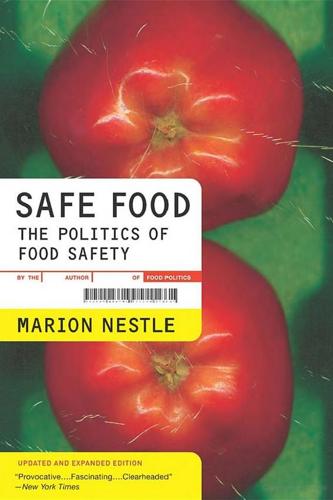
Safe Food: The Politics of Food Safety
by
Marion Nestle
Published 1 Jan 2010
The CDC identified foods eaten more frequently by people who had become ill—lettuce, cheddar cheese, and ground beef—and guessed that lettuce was the most likely source. Because multiple Taco Bell outlets were involved, the lettuce must have been contaminated early in the distribution chain. With that uncertain speculation, the CDC investigations concluded.27 Calls for regulation followed. Eric Schlosser wrote, “Aside from industry lobbyists and their Congressional allies, there is little public support for the right to sell contaminated food. Whether you’re a Republican or a Democrat, you still have to eat.” A New York Times editorial said, “Surely it is time to give government regulators the power and resources they need to ensure the safety of fresh fruits and vegetables.”28 Representatives introduced food safety bills in Congress.
…
The etiology of tuberculosis (Koch’s postulates), 1884. In: Brock TD. Milestones in Microbiology: 1556 to 1940. Washington, DC: American Society of Microbiology, 1998:116–118. 24. Riemann H, Bryan FL. Food-Borne Infections and Intoxications, 2nd ed. New York: Academic Press, 1979:235–238. 25. CDC. Human ingestion of Bacillus anthracis-contaminated meat—Minnesota, August 2000. MMWR 2000;49:813–816. 26. CDC. Human anthrax associated with an epizootic among livestock—North Dakota, 2000. MMWR 2001;50:677–680. 27. Guillemin J. Anthrax: The Investigation of a Deadly Outbreak. Berkeley: University of California Press, 1999.
…
A second advertisement appeared on December 18 announcing the end of the CDC’s investigation. The quotation is from DePalma A, Martin A. New Jersey distribution site is scrutinized as more E. coli cases are reported. NYT, December 8, 2006:B1. 27. CDC. Multistate outbreak of E. coli O157 infections linked to Taco Bell, November–December 2006. Online: www.cdc.gov/ecoli/2006/december/. 28. Schlosser E. Has politics contaminated the food supply? NYT, December 11, 2006. Sickened by fresh produce. NYT, December 9, 2006 (editorial). Burros M. E. coli fears inspire a call for oversight. NYT, December 9, 2006:B1. 29. FDA. Melamine pet food recall of 2007. Online: www.fda.gov/AnimalVeterinary/SafetyHealth/RecallsWithdrawals/ucm129575.htm. 30.

The Code Breaker: Jennifer Doudna, Gene Editing, and the Future of the Human Race
by
Walter Isaacson
Published 9 Mar 2021
“For hours, lab technicians struggled to verify that the test worked.” When they ran the tests on samples known to contain the virus, they got a positive result. That was good. Unfortunately, when they ran the test on purified water, they also got a positive result. One of the chemical compounds in the CDC test kits was defective. It had been contaminated during the manufacturing process. “Oh, shit,” said Jennifer Rakeman, an assistant commissioner of the city’s health department. “What are we going to do now?”3 Adding to the disgrace was the fact that the World Health Organization had delivered 250,000 diagnostic tests that worked just fine to countries around the world.

Blood Music
by
Greg Bear
Published 19 May 2014
“What in hell do we tell them?” “That we are all in the early stages of a very dangerous infection,” Bernard said, “generated in our laboratories by a researcher, now dead—” “Murdered,” Yng said, shaking his head in disbelief. “And spreading at an alarming rate.” “Yes,” Yng said, “but what can the CDC do about it? The contamination has spread, perhaps across the continent by now.” “No,” Harrison said, “not quite that far. Vergil hasn’t made contact with that many people. It could still be confined to Southern California.” “He made contact with us,” Yng said ruefully. “It is your opinion we are contaminated?” “Yes,” Bernard said.
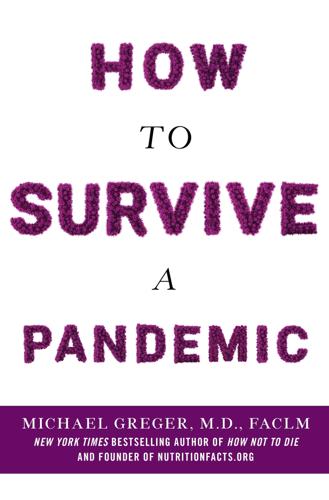
How to Survive a Pandemic
by
Michael Greger, M.D., FACLM
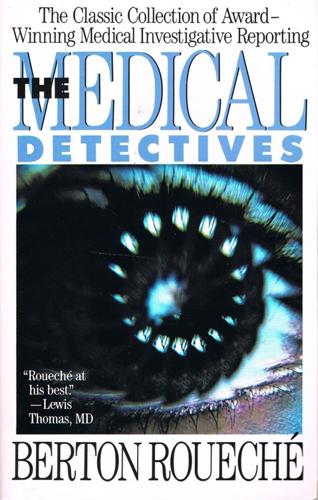
The Medical Detectives
by
Berton Roueche
Published 1 Jan 1980
Depending upon the amount of unused material located throughout the country and its location, it will be either returned to the [manufacturer] or destroyed locally, with assistance from the CDC. The recommendation is made to either disinfect or destroy all imported contaminated goat hair in the [Ajax Corporation] warehouse, with the assistance and supervision of the CDC. Concerning the total problem of the importation of animal products contaminated with B. anthracis, the consensus was that the infrequency of cases and the gradual decline in the use of these materials did not justify any specific action by the Public Health Service at this time.'

The Food Revolution: How Your Diet Can Help Save Your Life and Our World
by
John Robbins
Published 14 Sep 2010
If that character were real and did that today, it's doubtful he'd make it to the ring without massive illness. The Centers for Disease Control and Prevention now strongly advises consumers "to avoid recipes using raw eggs."47 Many egg-based foods that were regularly consumed in the past are actually now considered by the CDC to be too unsafe to eat, due to the Salmonella contamination of eggs. These include soft-boiled eggs, poached eggs, sunny side-up eggs, mousses of all descriptions, Caesar salad, homemade eggnog, lemon meringue pie, Hollandaise sauce, raw cookie dough, and several classic types of cake frosting.48 As so often happens, however, industry and public health groups have different opinions...
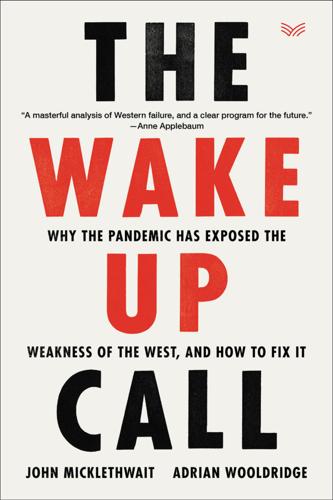
The Wake-Up Call: Why the Pandemic Has Exposed the Weakness of the West, and How to Fix It
by
John Micklethwait
and
Adrian Wooldridge
Published 1 Sep 2020
As Fareed Zakaria has pointed out, the core of New York’s failure when set aside similar-size Asian cities, with crowded subways and the rest of it, was simply bad government.13 Despite having months of warning that the virus was coming, the United States did not really start to treat the pandemic seriously until April, and even then the health guidelines were confused, with, for instance, the CDC going backward and forward over whether the virus could be transmitted through touching contaminated surfaces. But by then in cities like New York the virus, not the government, was in control. TEST AND YOU SHALL FIND Moving to lockdown quickly was not an immediate cure-all. One of the more successful countries, Germany, was relatively late, while Japan emerged from only two months of lockdown with fewer than a thousand deaths.
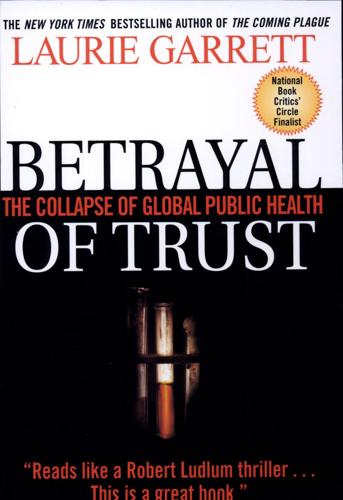
Betrayal of Trust: The Collapse of Global Public Health
by
Laurie Garrett
Published 15 Feb 2000
The CDC, working closely with epidemiologists in San Francisco, Los Angeles, and New York, swiftly identified the means by which AIDS was spread and proved that the disease was caused by some form of infectious microorganism. Within months of the May 1981 recognition that a new, fatal disease had emerged among gay men, Curran’s team at the CDC had determined that it was spread via anal and vaginal intercourse, contaminated IV needles, and contaminated blood. A little later in the epidemiology, they noted mother-to-child transmission. The bottom line, the CDC said in 1982, was exposure to contaminated blood. Even in the absence of discovery of HIV, appropriate public health measures (number three) based on those observations would have involved widespread education about how every American could avoid blood-to-blood exposure and concrete steps to decrease such risks: screening of the U.S. blood supply, basic protective gear for hospital and clinic employees, promotion of condom use by sexually active adults, ensuring that all injections—medical or for illegal drug use—involved use of sterile needles and syringes, and closure of or strong admonishments against social settings that encouraged behaviors that put people at risk of blood-to-blood exposure.
…
Britain’s Porton Down biological warfare facility was once considered suitable, and had played a role in the 1976 Ebola crisis. But due to changing political considerations vis-à-vis biowarfare and several rounds of budget cuts, Porton Down did not meet 1995 BL-4 standards. For decades the leading backup to the CDC was France’s Institut Pasteur in Paris. But WHO officials were reluctant to direct “hot” samples to the French laboratory because a scientist studying Ebola-contaminated blood there in the fall of 1994 had come down with the disease, indicating a security breach. That left only one alternative BL-4 facility: the U.S. Army’s Fort Detrick laboratory in Maryland. There, too, downsizing and budget cuts had taken a toll, as the Department of Defense sought to reduce its share of the national debt.

Beggars in Spain
by
Nancy Kress
Published 23 Nov 2004

A Manual for Creating Atheists
by
Peter Boghossian
Published 1 Nov 2013
Conspicuously absent from the Centers for Disease Control and Prevention’s information Web page are epistemologists: “From the food you eat, to the air you breathe, to staying safe wherever you are, CDC’s mission touches all aspects of daily life. CDC researchers, scientists, doctors, nurses, economists, communicators, educators, technologists, epidemiologists and many other professionals all contribute their expertise to improving public health” (CDC, 2012). We need to institutionalize the way we deal with cognitive contamination by virulent epistemologies. Future generations will likely view the eradication of epistemological contagions in the same way that previous generations viewed the importance of eradicating smallpox and polio. When I told my father that K–12 educational systems should promote the value of epistemological rigor, he replied incredulously, “Are you kidding me?
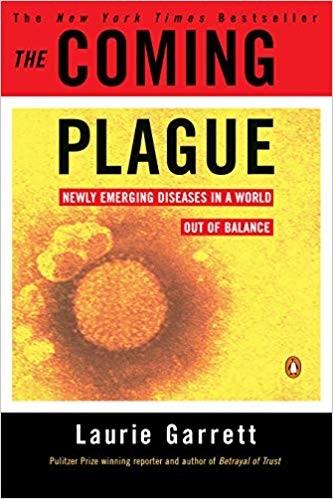
The Coming Plague: Newly Emerging Diseases in a World Out of Balance
by
Laurie Garrett
Published 31 Oct 1994
Their conclusion: the three deaths were statistical anomalies, not events caused by the vaccine. “Persons vaccinated in the [Pittsburgh] clinic died at a rate of 5/100,000/day in contrast to the expected rate of 17/100,000/day for persons 65 years and older in Pennsylvania,” CDC scientists argued.40 The FDA tested the Parke-Davis vaccine immediately following the Pittsburgh deaths and proclaimed it free of contamination. By mid-December the number of deaths and illnesses allegedly linked to Swine Flu vaccines would reach 283, more than half limited to headaches or mild fevers.41 Two months later, the agency would report that the fall of 1976 marked an unusually disease-free time, with the numbers of pneumonia and influenza-associated deaths at their lowest points since 1972.
…
Swine Flu and Legionnaires’ Disease had certainly been politicized epidemics, but scientists working on the front lines had, for the most part, been shielded from the squabbles and allowed to pursue their investigations. And they never lacked sufficient resources. If GRID had been, for example, a lethal contamination of a commercial food product, there would have been no question of the CDC’s public health mandate: order a recall of the product, issue high-profile public warnings, and identify and disinfect the source of the contamination. But what constituted proper health action in 1982 for GRID? Curran and Jaffe felt a key part of their job was to warn the gay community. In public forums in New York, San Francisco, and Los Angeles the CDC scientists labeled GRID “an epidemic unprecedented in the history of American medicine” and urged gay Americans to shake themselves out of a state of collective denial.
…
Under U.S. law they were required to maintain such records and samples only for five years, and by 1986 hospitals and blood banks all over the country began actively shredding their pre-1982 paper trails and purging computer files. By allowing such wholesale destruction, the U.S. government condoned elimination of a crucial set of clues in the AIDS mystery. CDC studies of HIV/blood connections in Los Angeles, however, revealed that the earliest date of HIV infection of a person receiving contaminated blood-clotting products was 1978. It was an isolated case, however; the bulk of all blood product infections in the United States occurred in 1983–84.146 It would be tempting to conclude that, given the extraordinary numbers of donors’ microbes to which people with hemophilia were annually exposed, HIV either didn’t exist in North America prior to 1978 or was so rare as to escape chance exposure even for individuals who injected products derived from the pooling of the blood of over 300,000 people a year.

Aftershocks: Pandemic Politics and the End of the Old International Order
by
Colin Kahl
and
Thomas Wright
Published 23 Aug 2021
Virtually no one in the West Wing wore a mask, and those staffers at the NSC, which is housed in the Eisenhower Executive Office Building across a narrow alley from the White House, who donned one were ridiculed by the inner circle or told that the boss did not like it.34 Trump admitted to Woodward on February 7 that the virus was “more deadly than the flu, maybe five times more so,” but he continued to publicly play it down (he justified this to Woodward by saying that he didn’t want to create a panic).35 For instance, on February 27 he said publicly, “It’s going to disappear. One day—it’s like a miracle—it will disappear.”36 As the virus began to take hold across America, early efforts with testing proved difficult. On February 8, the CDC realized that there was a flaw that contaminated the early COVID-19 test they had developed—in their rush to produce a diagnostic tool they had cut corners and produced materials contaminated with snippets of the virus.37 One Trump administration official told us this was the real black swan in the U.S. response—a pandemic had been widely predicted by experts for years but no one expected a catastrophic early mistake in producing a reliable test.
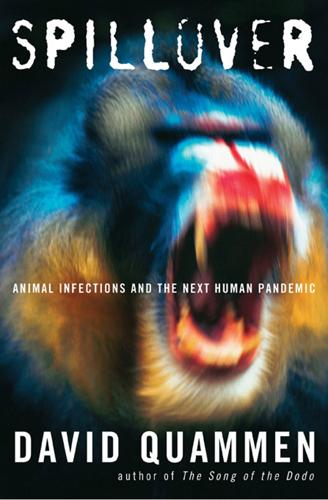
Spillover: Animal Infections and the Next Human Pandemic
by
David Quammen
Published 30 Sep 2012
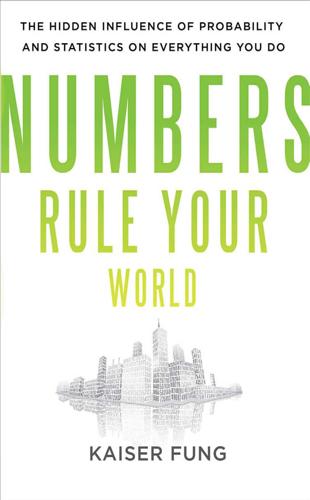
Numbers Rule Your World: The Hidden Influence of Probability and Statistics on Everything You Do
by
Kaiser Fung
Published 25 Jan 2010
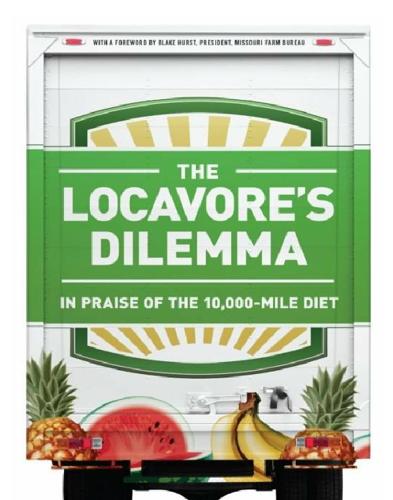
The Locavore's Dilemma
by
Pierre Desrochers
and
Hiroko Shimizu
Published 29 May 2012

The Rough Guide to Cape Town, Winelands & Garden Route
by
Rough Guides
,
James Bembridge
and
Barbara McCrea
Published 4 Jan 2018
Dental care in South Africa is also well up to British and North American standards, and is generally less expensive. You’ll find dentists in Cape Town and most smaller towns. Inoculations No specific inoculations are compulsory if you arrive in South Africa from the West, although the CDC suggests several immunisations as routine for adults and children. In addition, it recommends inoculations against typhoid and hepatitis A, both of which can be caught from contaminated food or water – though this is extremely unlikely in the region covered by this guide. A yellow fever vaccination certificate is necessary if you’ve come from a country or region where the disease is endemic, such as Kenya, Tanzania or tropical South America.

Lonely Planet Cancun, Cozumel & the Yucatan (Travel Guide)
by
Lonely Planet
,
John Hecht
and
Sandra Bao
Published 31 Jul 2013
Typhoid Recommended for all unvaccinated people, especially for those staying in small cities, villages and rural areas. Internet Resources MD Travel Health (www.mdtravelhealth.com) Complete travel health recommendations for every country, updated daily. Centers for Disease Control & Prevention (www.cdc.gov/travel) Official US website. In the Yucatán Hepatitis A Hepatitis A occurs throughout Central America. It’s a viral infection of the liver usually acquired by ingestion of contaminated water, food or ice, though it may also be acquired by direct contact with infected persons. The illness occurs worldwide, but the incidence is higher in developing nations. Symptoms may include fever, malaise, jaundice, nausea, vomiting and abdominal pain.